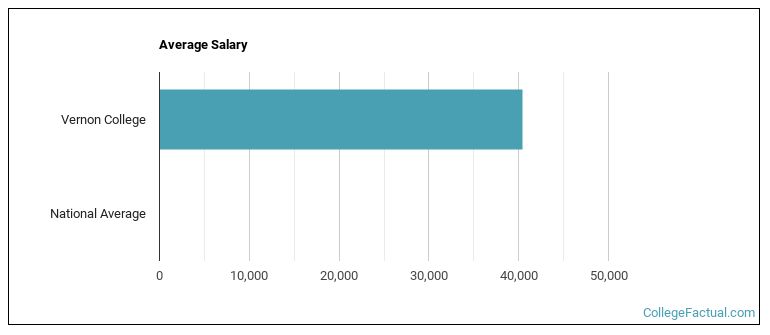 by our College Data Analytics Team
by our College Data Analytics Team
College Factual analyzes over 2,000 colleges and universities in its annual rankings and ranks them in a variety of ways, including most diverse, best overall quality, best for non-traditional students, and much more.
Vernon College was awarded 2 badges in the 2025 rankings. The highest ranked major at the school is health professions.
Explore the best ranked schools for the programs you are most interested in.
College Factual ranked Vernon Regional Junior College as #1,500 out of 2,152 colleges and universities in the country on its 2025 Best Colleges list. This is an improvement over the previous year, when Vernon Regional Junior College held the #1,709 spot on the Best Overall Colleges list.
Vernon Regional Junior College also holds the #70 spot on the Best Colleges in Texas ranking.
Returning adults and other non-traditional students may appreciate the fact that Vernon College has an open admissions policy. This means that you'll only have to submit basic materials, which may include proof that you completed high school or an equivalent program.
The student to faculty ratio is often used to estimate how much interaction there is between professors and their students at a college or university. At Vernon College, this ratio is 14 to 1, which is on par with the national average of 15 to 1. That's not bad at all.
Another measure that is often used to estimate how much access students will have to their professors is how many faculty members are full-time. The idea here is that part-time faculty tend to spend less time on campus, so they may not be as available to students as full-timers.
The full-time faculty percentage at Vernon College is 49%. This is comparable to the national average of 47%.
The freshmen retention rate of 37% tells us that most first-year, full-time students don't stick around for a second year at Vernon College. Students may have a variety of reasons for this, such as only intending to attend a school for one year while they brush up on certain subjects.
During the 2017-2018 academic year, there were 2,773 undergraduates at Vernon Regional Junior College with 810 being full-time and 1,963 being part-time.
| $0-30 K | $30K-48K | $48-75 | $75-110K | $110K + |
|---|---|---|---|---|
| $4,114 | $5,966 | $8,057 | $12,304 | $10,269 |
The net price is calculated by adding tuition, room, board and other costs and subtracting financial aid.Note that the net price is typically less than the published for a school. For more information on the sticker price of Vernon Regional Junior College, see our tuition and fees and room and board pages.
It's not uncommon for college students to take out loans to pay for school. In fact, almost 66% of students nationwide depend at least partially on loans. At Vernon Regional Junior College, approximately 38% of students took out student loans averaging $5,528 a year. That adds up to $22,112 over four years for those students.

Get more details about the location of Vernon College.

Contact details for Vernon Regional Junior College are given below.
| Contact Details | |
|---|---|
| Address: | 4400 College Dr., Vernon, TX 76384-4092 |
| Phone: | 940-552-6291 |
| Website: | www.vernoncollege.edu/ |
| Most Popular Majors | Bachelor’s Degrees | Average Salary of Graduates |
|---|---|---|
| Liberal Arts General Studies | 234 | NA |
| Nursing | 68 | NA |
| Practical Nursing & Nursing Assistants | 52 | NA |
| Cosmetology | 27 | NA |
| Teacher Education Grade Specific | 18 | NA |
| Allied Health Professions | 17 | NA |
| Environmental Control Technology | 13 | NA |
| Health & Medical Administrative Services | 13 | NA |
| Allied Health & Medical Assisting Services | 11 | NA |
| Precision Metal Working | 11 | NA |
Online learning is becoming popular at even the oldest colleges and universities in the United States. Not only are online classes great for returning adults with busy schedules, they are also frequented by a growing number of traditional students.
In 2022-2023, 1,352 students took at least one online class at Vernon College. This is a decrease from the 1,490 students who took online classes the previous year.
| Year | Took at Least One Online Class | Took All Classes Online |
|---|---|---|
| 2022-2023 | 1,352 | 558 |
| 2021-2022 | 1,490 | 650 |
| 2020-2021 | 1,495 | 696 |
| 2018-2019 | 1,248 | 431 |
Footnotes
*The racial-ethnic minorities count is calculated by taking the total number of students and subtracting white students, international students, and students whose race/ethnicity was unknown. This number is then divided by the total number of students at the school to obtain the racial-ethnic minorities percentage.
References
More about our data sources and methodologies.